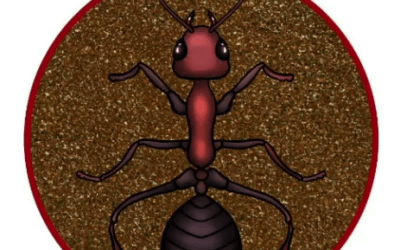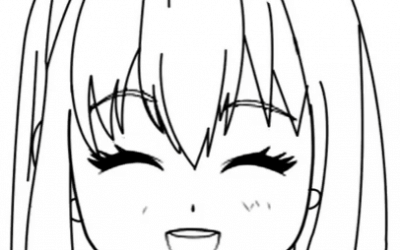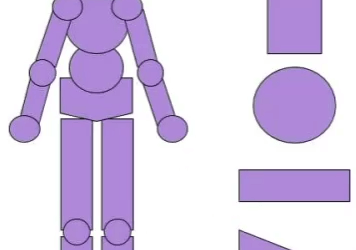Drawing from your imagination is unlike anything you’ll draw from a reference. You have no boundaries or limitations like when creating a drawing from a life reference. The sky’s the limit if you choose to draw a sky, that is. You can think of this method of drawing as working in your own personal theater, where you have your own custom audience, and the rules of physics don’t apply.
Your drawings can be as surreal and shocking or as realistic and comforting as you desire. The nice part is that once you’ve mastered how to draw from a picture reference, you’ll be able to apply these techniques and rules to things you can’t see in the real world or a picture. You can start by recreating images from references of other artists’ work, if that helps to get you started, but the best way to learn is to begin with your own drawings.
These drawings may feel like they take more time; especially if you’re creating something that doesn’t have many references you can apply from existing resources. However, there is no harm in creating multiple versions of these too, until you feel you have the drawing exactly as you’ve envisioned.
There is a lot to be said for the limitless world of the imagination and all the wonderful creations that can come from it. Whether you choose to be a portraiture artist, a painter, a writer, or a dancer-any profession in the world starts out as a thought and a flicker of imagination. The same can be applied to drawing.
Your final piece could be an abstract concept, a visualization of a thought, an idea, or a vision you want to articulate to everyone else. It should allow you to channel your creativity and communicate effectively what you might not be able to do with words themselves.

Drawing from imagination requires a solid understanding of the fundamentals of drawing, which by now, you already have. Once you’ve learned how to translate light into shadow, and how to simulate depth, texture, and the patterns in the world around you, you are equipped to start applying these techniques to the images you want to create from your imagination. You can manipulate these techniques to create the desired effects in your drawings to create stunning pictures from imagination alone.
It is also important that you keep practicing the fundamentals you’ve learned, as this will help you to call on them when needed. It lets you feel confident in your craft, and if you have that confidence in your own ability, it will prevent you from feeling discouraged if your initial drawing doesn’t turn out just how you want it to. Continued and purposeful practice also helps to keep your mental library of assets up to date. You may never have a need to draw some of the things in that library as items on their own, but they might be combined as a reference with another item to create their own unique shapes.
To keep this library up to date, you must ensure that you’re observing the world around you too. Look at other works of art, explore the area around where you live, and take pictures of things. You never know when you might find a perspective, texture, or shadow you haven’t yet tried to draw. These unique moments can lead to greater inspirations later too. It may not seem like a useful technique for the immediate future, but even in my own work, I have found myself recalling things I found interesting as a child and trying to incorporate them into my work. It could be something as small as a type of highlight or reflection being different to how you’d normally see it, but these things stay with us and help to inspire us as we work.

When working from imagination it is important to draw inspiration from whatever sources help you to create. Below, I’ve included my own drawings, which feature work that started with a reference, and came to life even more through my imagination. This technique can help create some of the best ideas and it’s a great thing to try! They reference things you can find in real life, which, when incorporated, create more surrealistic results. In the first drawing, I used a side profile drawing of a girl’s face and combined it with landscape drawing to create a unique image in her hair of a person standing in water. The hair already adds some textures that are like water and can be adapted slightly to help give that illusion, the girl has her hair tied back, which helps create this effect, and the waves were drawn using the hair as a foundation for the horizontal shapes and ripples.
Using textures found on an existing item to help create textures in an imaginary element is useful when you’re looking at transitioning between reality and the imagination.

In the below drawing, I have used figure drawing and combined it with tree branches and roots to create the result. The body of a person and the body of a tree have different textures, but they are often likened to one another as spiritual vessels. By merging these two, it further affected the shadows created within and around the form. Taking these two items gives a visually and conceptually unique result that you can recreate with other plants and objects around you.
The human form is uniquely versatile when it comes to portraying different concepts and visions. It may be why it is so highly regarded in art as something that every artist should try to draw at least once or twice when discovering their own path.

My final drawing combines items found in real life, but in a unique situation. The human hand, set like a puppeteer, pulling on the strings attached to a heart. This uses the personal library of things one might see or envision and combines them to create a realistic but equally surreal final piece.

As you explore the invisible, it might seem hard to remember the basics, but every drawing starts with your base shapes. Each shape is built with detail lines, and filled with values, be they black and white or colors. You have infinite choices about what you can do with your shapes. You might even choose to leave them as shapes, expanding and creating patterns from them. You have an endless supply of opportunity.
Many artists also use this opportunity to express their feelings. It could be an emotion from an event from long ago or recently. Whatever they might be, they can be brought to life and articulated easily through art. It is commonplace for art to be used to help mental well-being, and there is a whole profession dedicated to therapy through art and how it can be used to express yourself in a safe and healthy way. It may seem less than conventional, especially when compared to realism art, but even drawings that have a foundation in reality can convey extraordinary insight into someone’s emotional state. Don’t shy away from your subconscious and the opportunity to use it to inspire your work.

However, you may be saying: What if I’m not an imaginative person? What can I do then? Or maybe, like many people, you don’t think you have an imagination. It’s a natural thought to have, and occasionally, we all doubt our own capabilities when it comes to thinking of concepts and imagining beyond what we can perceive. However, we are all equipped with an imagination—no matter how quiet it might be at times.
You don’t have to walk around with your head in the clouds to have an imagination. We all think differently. Some people perceive their thoughts as pictures, others as words, others as sounds. There is no limit to how your thoughts might present themselves to you, but there is always an opportunity to strengthen your imagination and to improve your own creativity.
If you find yourself daydreaming about somewhere you’d love to be, someone you wish you could see, or even a new thing you’re saving to buy, try to sketch it from the mind’s eye. It can be a quick pencil sketch, an outline, or the basic shapes, whatever you can get on the paper before the image fades. Once you’ve got those base sketches, it’s up to you whether you continue them and make them full drawings or just use them as references to create bigger and more detailed pieces later. There really is no limit to what you do with these references.
As you experiment, try to find objects you can experiment with in the world around you. There’s no reason that your toaster shouldn’t be drawn with flowers coming out the top; why would you stop yourself from drawing a giant fishbowl in your backyard, complete with deep sea divers and tropical fish? Why limit yourself when you can create anything you dream about?





